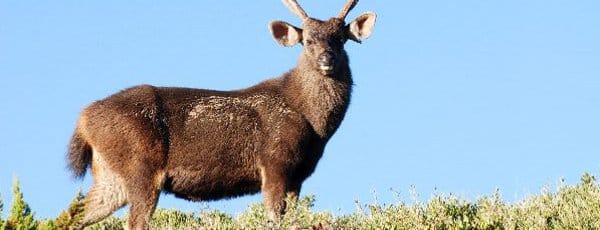Deer Breeding
Deer have a fairly long mating season that covers from October through January. This period of time is called the rut. The rest of the year the males don’t interact with the females. However, they will travel long distances during the rut to be able to find them. They will also take many risks such as being out in the open areas where hunters can spot them.
The males are going to offer some significant changes during this period of time. First, the size of the neck will grow from what it normally is. They will also have all of the velvet from their antlers shed. The antlers of the males are a large part of the mating rituals. They will fight with each other using them for the dominant right to be able to mate.
Most of the time neither of the males are injured during these battles. The fight ends when one of them walks away in defeat. The battle can last for a couple of minutes or for several days though. It depends on the skill, size, and determination of the two males involved. There are times when the antlers of these two males will become so entangled with each other that they will both be found death in the wilderness.
Once the dominant male has shown is strength, he gets to bask in his glory by mating with the females. He will mate often with as many of them as he possibly can. Once conception is a success there will be offspring born from 180 to 240 days later. Generally only one fawn is born but with most species of deer two or three of them at a time is possible.
While the fawns are slow and shaky at first, within hours of being born they are able to walk around. They quickly recognize their mother and instinctively known to stay very close to her for protection. The young deer will be well hidden in bushes or in dens. They are often left unattended for long periods of the day. The mothers have to be able to go feed for themselves and to be able to create the milk they feed their young.
At regular intervals though, the mothers will return to the young to check on them and to feed them. The young fawns will stay with their mothers until they are about two years of age. Most of the time the young fawns are safe but they can become a meal for predators out there as well. While the young fawns don’t have scent, the mothers do and that can be the trail that leads predators to the young.
It is illegal to hunt fawns but it does happen anyway. Individuals that are caught taking part in such efforts are often prosecuted. However, it can be very hard to find those responsible for such events occurring.
The reproductive efforts of deer are very good though. In fact, in an area where there are only one or two males and a couple of females, the population can grow to be about 30 in total by the end of a five year time period. Of course that is without hunting or predators to take into consideration.
The chances of living are up to 15 years of age is possible for any species of deer. It really depends on where they live and their food sources. Some deer live in areas that are heavy hunting grounds. Yet there are beautiful bucks out there that have been able to beat the odds and continue to roam freely in those areas just the same.







